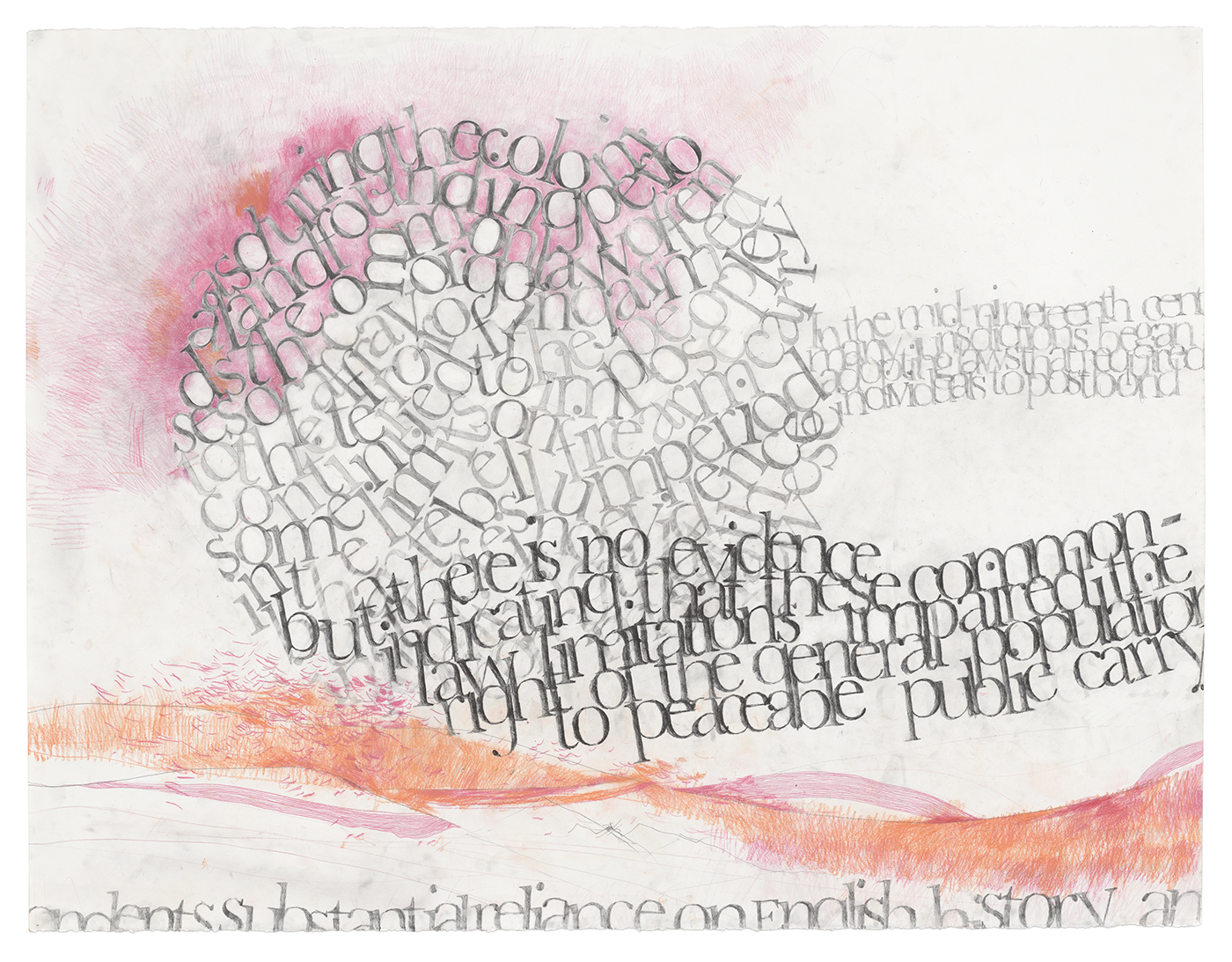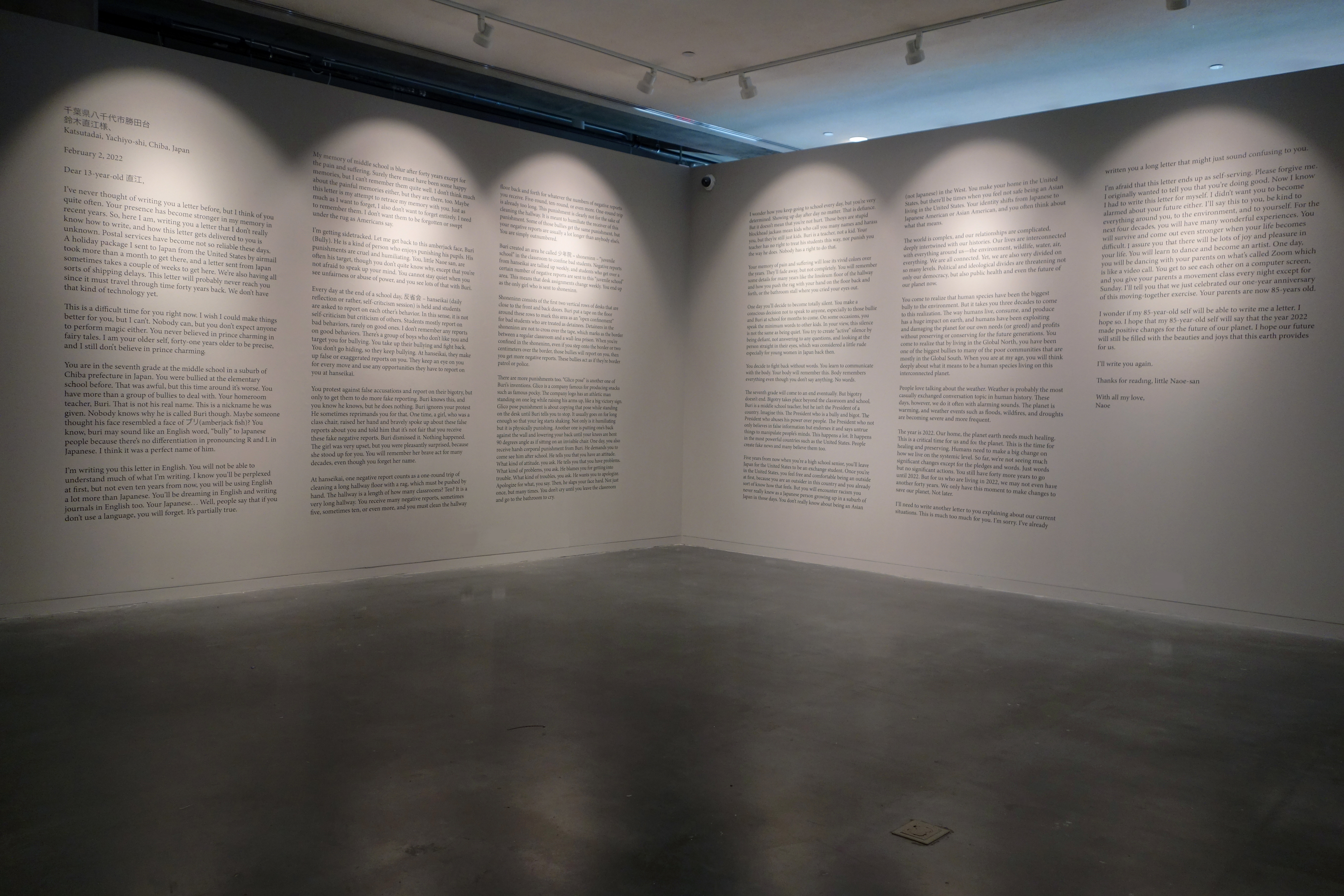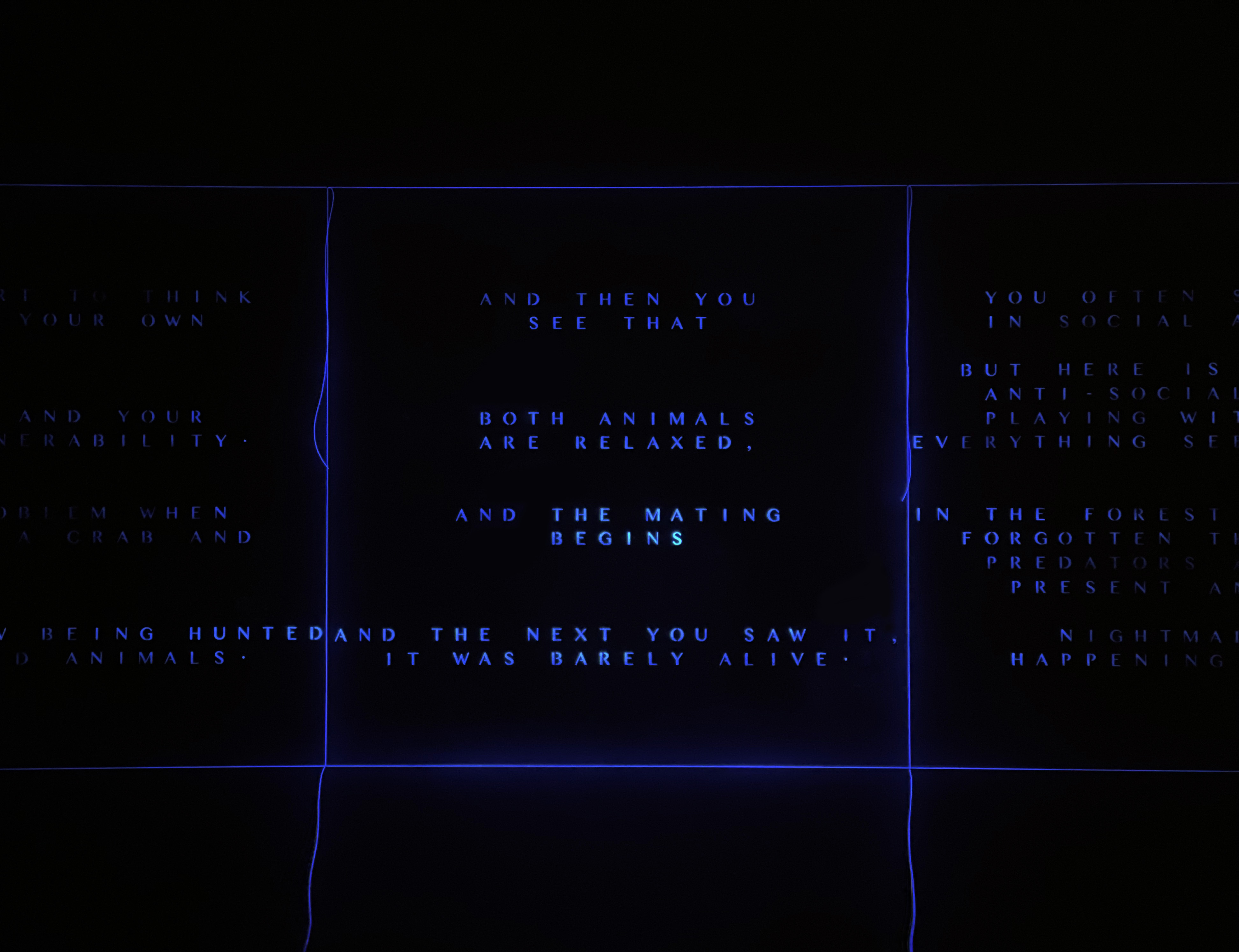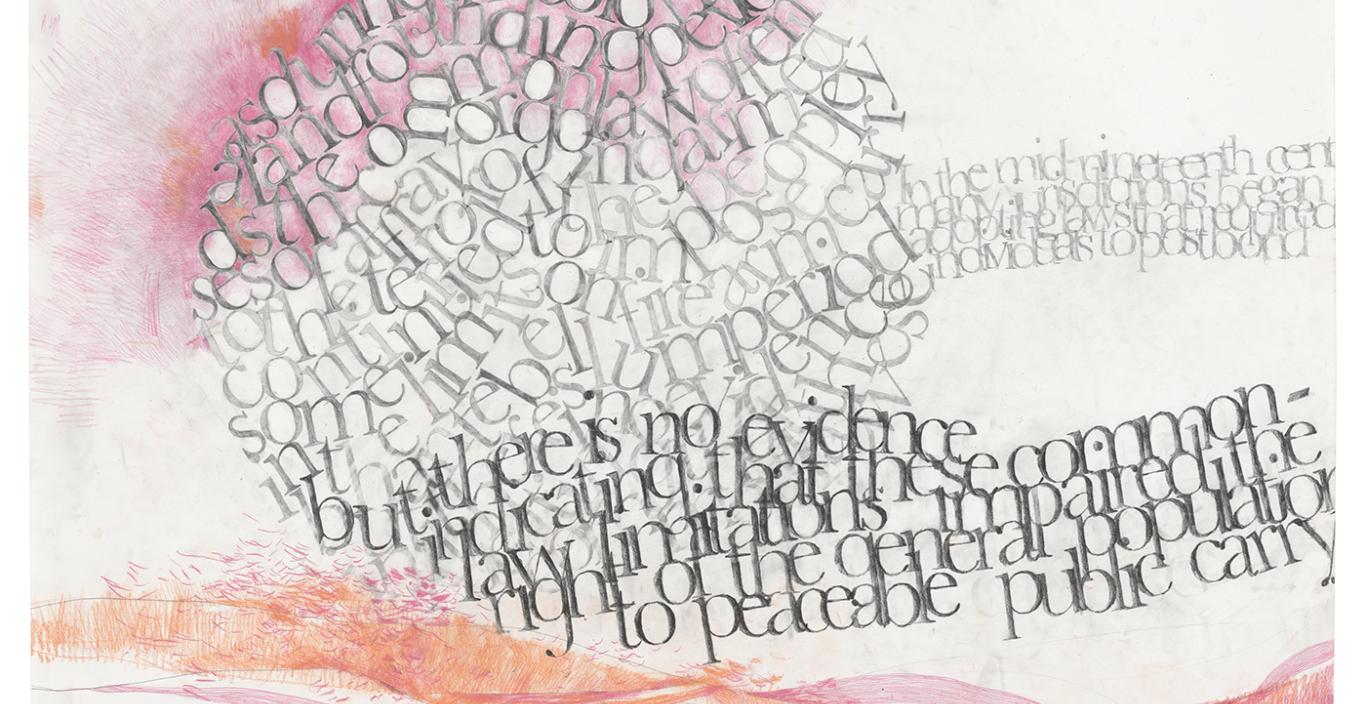“Language, Like Letters” highlights work by three artists who utilize the written word in various ways to investigate the subtle, overt, and invisible ways in which language can communicate, manipulate, confuse, and comfort.
Language, Like Letters was curated by Andrew Mroczek, Director of exhibitions at Lesley Art + Design. The February 22 reception will be open to the public from 6-8pm. If you are unable to attend the reception, please contact Andrew Mroczek at Andrew.Mroczek@lesley.edu to schedule an appoint to view the exhibit through March 3.

A series of 8 drawings by Gabriel Sosa incorporate portions of text derived from recent Supreme Court decisions. The words and letterforms are presented as abstract shapes that appear, at once, almost unassuming, and chaotic, albeit impactful and indefinite.
The pieces underscore often ambiguous and dangerous consequences of overturning legal decisions such as Dobbs v. Jackson Women’s Health Organization, which over¬turned Roe v. Wade and the constitutional right to abortion; New York State Rifle & Pistol Association, Inc. v. Bruen, which overturned a New York gun safety law that required a license to carry concealed weapons in public places; and Vega v. Tekoh, which prohibits civil lawsuits against police officers for not reading Miranda rights to suspects.
Sosa also includes “Practically Inevitable,” his 2017 single-channel video which features certified court interpreters in the Boston area incanting a portion of a form known as the “Defendant’s Waiver of Rights,” which highlights the repetitive and often confusing nature of the court system.

Naoe Suzuki’s debut of her site-specific piece “Letter to 13-year-old 直江” occupies two gallery walls in an impressive site-specific text installation. Here she communicates to her 13-year-old self as she reveals her personal experience with severe bullying at the hands of her teacher. The letter continues to investigate larger effects of bullying in a global scale.
The artist states, “In this letter I linked human species as bullies and the biggest bullies as the global powers—acknowledging that I am now a part of it due to living in the Global North, especially in the United States. This reality has been setting very heavily inside me especially in the last 125 days of war on Gaza, and in the midst of the accelerating climate crisis. It is clear to me who are the bullies and allies of bullies.”
Suzuki’s investigation continues the subject of the climate crisis, along with the damage of colonization, with the inclusion of the works from her Extinction Studies. In four large drawings, which are based on historical maps of the Adirondacks in Upstate New York, the artist uses black ink and walnut ink to painstakingly recreate heavily detailed copies of original maps entirely by hand. The drawings include the names of geographic areas that were named after the wildlife, such as “Eagle Lake,” “Little Otter Pond,” “Buck Mountain,” “Beaver Brook,” and “Salmon River,” but only the animal names are visible. The names float like tiny white specs in a sea of blackness, as if to form new constellations. Cartographic information such as the titles and borders are made visible by faithfully copying the original maps. The ghostly grid lines within the work are often based on townships—the systems implemented by the colonists. These lines show how the lands were fragmented and organized as towns and counties, which unveil the practice of renaming places by the colonists as a method of claiming the land as their own.

Kenson Truong’s “Besopke” is an interactive installation that confronts and explores aspects of identity and sexuality. Utilizing UV flashlights, visitors can explore seemingly empty gallery walls to unveil glowing texts that are hidden in plain sight. The artist writes, “My worth in much of my encounters within gay culture during my adolescence has been based on my racial identity as either undesirable or an object of sexual fetish. I often felt displaced due to racial prejudice, so therefore tried to abandon both my Asian and gay identities to better adapt – to survive. (An impossible endeavor.)
With this undertaking to hide – to be as straight as I could be to avoid scrutiny – I question my own masquerade and its influence on the development of homophobia within myself as a form of defense. It is this disidentification, that has led me to question my morality, treatment of others, and its alignment within gay or straight culture.”
“Bespoke” examines these internal struggles by using biology as metaphor, i.e., the class of cephalopods such as octopus, squid, and cuttlefish. A cephalopod’s aptitude to camouflage in plain sight through its ability to learn systems of deception, utilizing spatial memory, personalities, mimicry, and motor play. Their powers for extreme adaptation coupled with the tragedy that is their endless life of deceit and independence, make them creatures worth investigating both physiologically and psychologically.
The artist continues, “In my artistic practice, the act of survival and determination to hide in plain sight within a dangerous ecosystem, has developed into allegory for the phenomena represented by cognitive dissonance and social cognitive theory. Namely, trying to fit in within a hyper-masculine community that had caused much trauma for my younger self leading to depression, body dysmorphia, and at one time a desire to forsake my own racial identity.”
